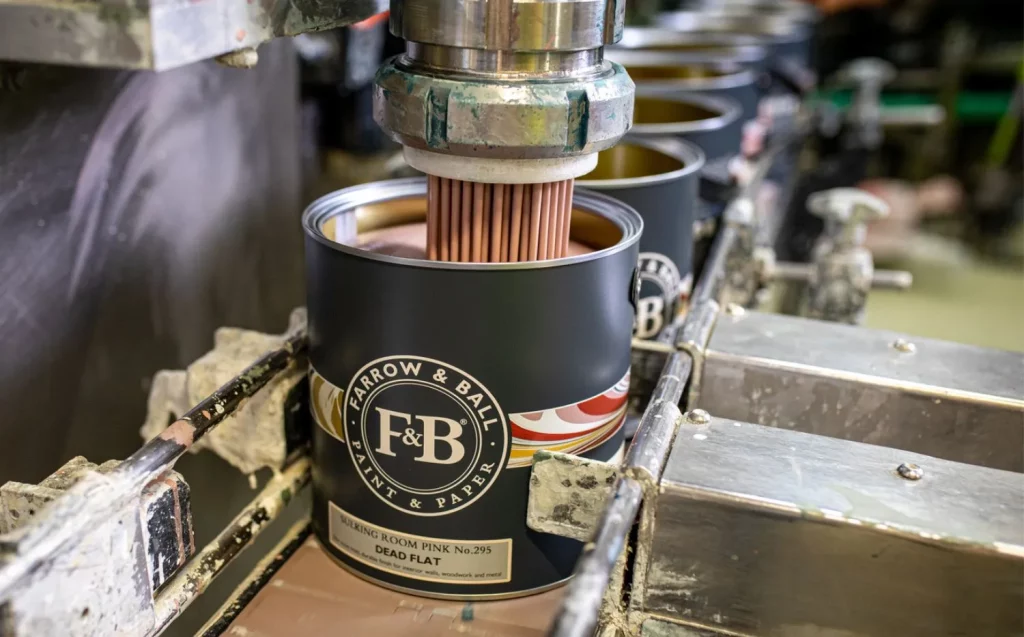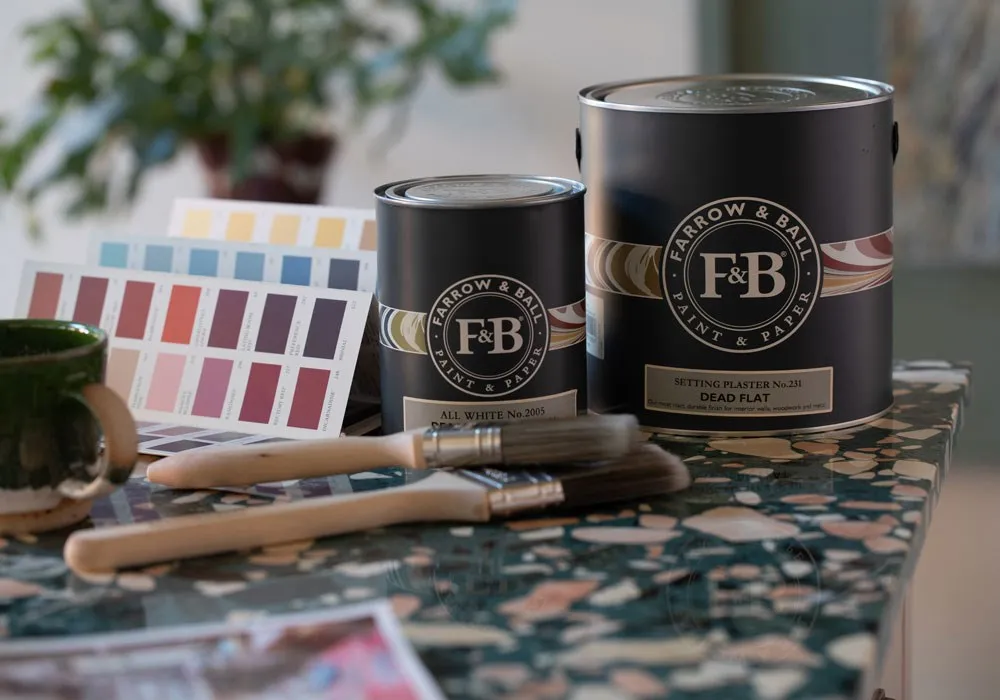Today we ask, is Farrow & Ball paint eco-friendly? Previously we’ve featured pioneering plant-based paints by Edward Bulmer and interviewed Frenchic eco-friendly paint Founder Pam Gruhn. Choosing a paint brand can be challenging when you’re trying to live more sustainably. How do you know if a paint is sustainable? how do you know if a paint is eco-friendly? where do you look? Let’s explore a few factors worth considering when choosing an eco-friendly paint, and see if Farrow & Ball is in fact an eco-friendly paint choice.

Volatile Organic Compounds (VOCs)
Longtime readers may recall Susan Inglis- Executive Director of the Sustainable Furnishings Council discussing VOCs in her interview. Much like furniture, paint can also contain VOCs. In brief, VOCs are chemical substances that readily evaporate into the air at room temperature. They are commonly present in various types of paints, such as latex and oil-based paints. It is crucial to highlight that continuous use of latex and oil-based paints can be detrimental to the environment and human health.

Farrow & Ball’s Water based finishes with Trace VOC
In 2010, Farrow & Ball became pioneers in the industry by transitioning their eggshell and gloss finishes to water-based formulations, ensuring durability without compromising on quality. Today, all their Emulsion paints are classified as Trace VOC, the lowest rating for Volatile Organic Compounds. The rest of their paint range is classified as Minimal or Low VOC, surpassing the requirements for these categories in many instances.

Where’s Farrow & Ball paint made?
Farrow & Ball may have a presence in over forty showrooms worldwide, including New York, London, Paris, and Milan, but all their paint is still crafted in Dorset, where the brand originated. So, if you’re in the UK you can rest assured that the carbon footprint of the Farrow & Ball paint range is low, as it doesn’t have far to travel.
Are Farrow & Ball cruelty-free?
As is normal practice within the paint industry, Farrow & Ball don’t test any of their paint on animals, so you can be sure that you’re painting your home with a cruelty-free product.
Image credit: @the_found_home @elysekennedy

What about the ingredients, are they vegan?
Farrow & Ball’s most commonly used finishes (Dead Flat®, Estate Emulsion, Estate Eggshell, Modern Emulsion, Modern Eggshell, Full Gloss, Exterior Eggshell, and Exterior Masonry) are vegan-friendly, containing no animal-derived ingredients.
However, two of their specialist finishes, Soft Distemper and Casein Distemper, contain animal-derived ingredients: an ingredient derived from leather offcuts and acid casein from milk, respectively. As such, these are the only two non-vegan products in the range.
For every litre of modern paint made it is estimated that 30 litres of toxic waste is put into our planet. Annually the paint industry creates over 50,000 tonnes of toxic waste, this is the weight of over 50,000 full grown Rhino’s – which is double the current Rhino population in the world.

How do I dispose of leftover Farrow & Ball paint and tins?
As we mentioned in our previous post, Edward Bulmer paints are environmentally friendly, in fact they’re even compostable, how do Farrow & Ball measure up? Although there’s no mention of composting, Farrow & Ball do offer the following tips for disposing of leftover paint:
- To save paint for touch-ups, transfer it to a sealable container like a jam jar or ensure the tin lid is tightly closed.
- Store the container upside down briefly to create an airtight seal, preventing a skin from forming on the paint.
- Keep the paint in a cool, well-ventilated area away from extreme temperatures and frost.
- If you have leftover paint you can’t use, offer it to friends, family, or neighbours, or look for paint re-use schemes in your community.
- If you can’t find a new home for the paint, consider recycling it at a local recycling centre. Check RecycleNow for current options in your area.

Tin-Back Scheme Trial
In 2023 Farrow & Ball trialed a “tin back scheme”, customers could bring empty Farrow & Ball tins to any of their UK showrooms and Farrow & Ball promised to make sure they’d be turned into something shiny and new. Farrow & Ball tins of any size, colour or finish, were accepted during the trial. If the trial is successful, they hope to make it permanent.
As well as offering a beautiful range of colours, Farrow & Ball are working on their sustainability efforts and already leading the way in a lot of areas. Hopefully the tin-back scheme trial was a success and we can see lots more exciting sustainable initiatives in the future.




